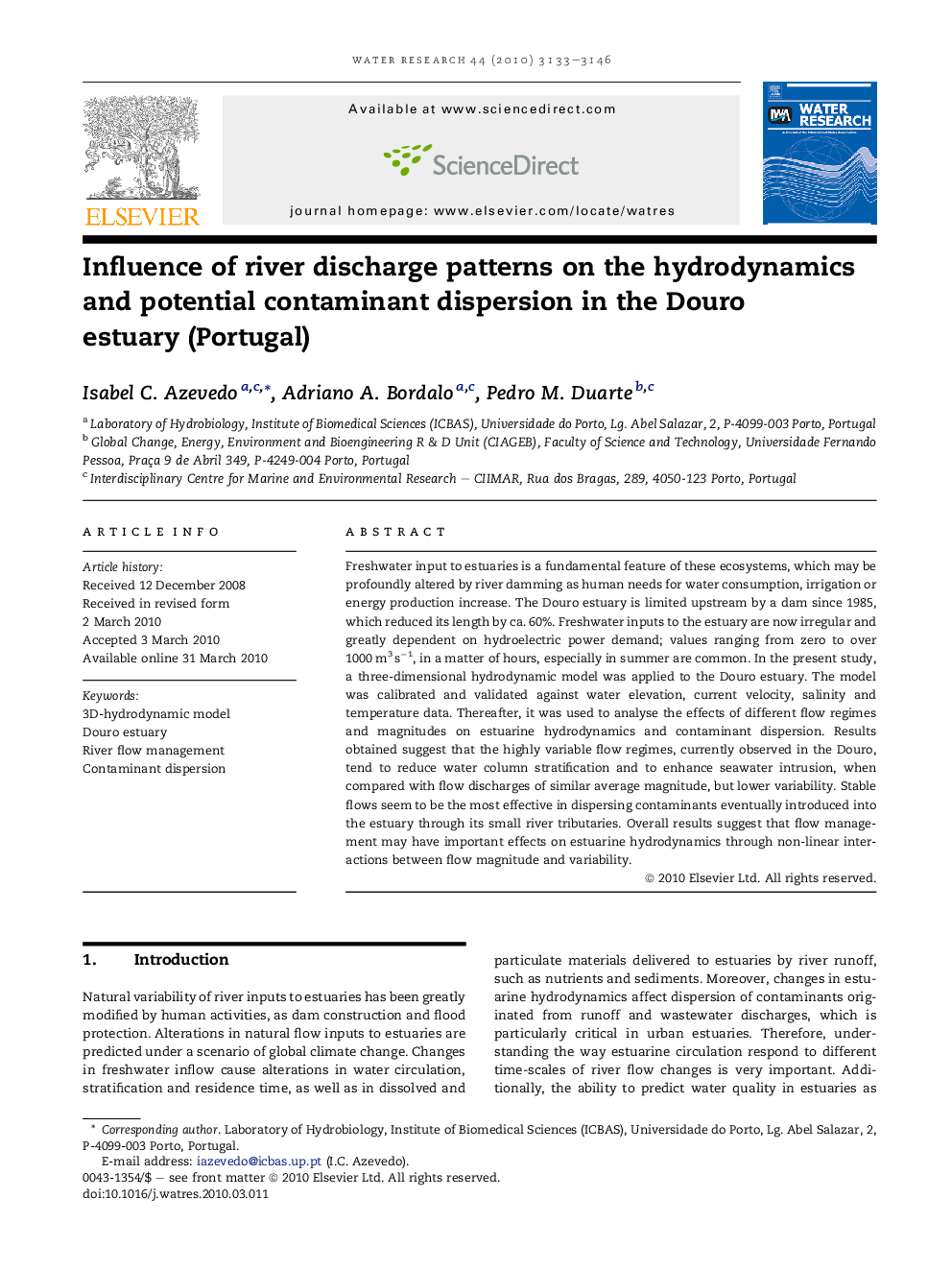| Article ID | Journal | Published Year | Pages | File Type |
|---|---|---|---|---|
| 4485086 | Water Research | 2010 | 14 Pages |
Freshwater input to estuaries is a fundamental feature of these ecosystems, which may be profoundly altered by river damming as human needs for water consumption, irrigation or energy production increase. The Douro estuary is limited upstream by a dam since 1985, which reduced its length by ca. 60%. Freshwater inputs to the estuary are now irregular and greatly dependent on hydroelectric power demand; values ranging from zero to over 1000 m3 s−1, in a matter of hours, especially in summer are common. In the present study, a three-dimensional hydrodynamic model was applied to the Douro estuary. The model was calibrated and validated against water elevation, current velocity, salinity and temperature data. Thereafter, it was used to analyse the effects of different flow regimes and magnitudes on estuarine hydrodynamics and contaminant dispersion. Results obtained suggest that the highly variable flow regimes, currently observed in the Douro, tend to reduce water column stratification and to enhance seawater intrusion, when compared with flow discharges of similar average magnitude, but lower variability. Stable flows seem to be the most effective in dispersing contaminants eventually introduced into the estuary through its small river tributaries. Overall results suggest that flow management may have important effects on estuarine hydrodynamics through non-linear interactions between flow magnitude and variability.
